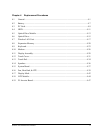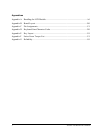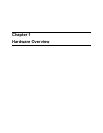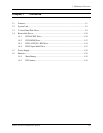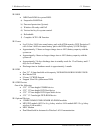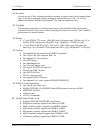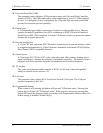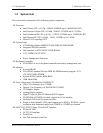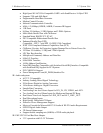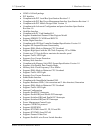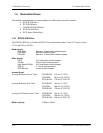
1.1 Features 1 Hardware Overview
Keyboard
An easy-to-use 87-key keyboard provides a numeric keypad overlay for fast numeric data
entry or for cursor and page control. It supports software that uses a 101- or 102-key
enhanced keyboard. Includes one Windows
®
key and one Application key.
TouchPad
This pointing control device, located in the center of the keyboard palm-rest, provides
convenient control of the cursor without requiring desk space for a mouse. The TouchPad
incorporates two mouse buttons.
Display
• 17-inch WXGA TFT screen, 1400×900 pixels, Response time 25-40ms (typ.); For
Normal LCD-Contrast ratio 200-400:1 (typ.); Brightness 170-200 Nit (typ.)
• 17-inch WXGA WSXGA+CSV TFT screen, 1680×1050 pixels, Response time
40ms (typ.); For Normal LCD-Contrast ratio 400:1 (typ.); Brightness 170 Nit (typ.)
I/O Ports
• One optional 25-pin parallel port, EPP/ECP capability
• One 15-pin CRT port, supports DDC 2B
• One optional TV-out connector
• One MIC-In port
• One Headphone-Out
• One 2-pin AC adapter jack
• One type II PCMCIA card bus slot
• Three 4-pin USB 2.0 ports
• One RJ11/RJ45 Port
• VR for volume control
• One optional IEEE 1394 port
• One optional 5-in-1 port, support SD/MMC/SM/MS/XD
PCMCIA Card Organization
• One type II card socket only
• SRAM, OTPROM, FLASH ROM, mask ROM memory card up to 64MB
• MODEM/LAN card
• Card bus card
• ACPI 1.0 Compliant
Multiple Digital Media Card
• Supports SD/MMC/SM/MS/MS Pro/xD card
• SD memory capacity support from 8MB to 512MB
• MMC memory capacity support from 8MB to 256MB
• SM memory capacity support from 4MB to 128MB
• MS memory capacity support from 8MB to 256MB
• MS Pro memory capacity support from 256MB to 1GB
• xD memory capacity support from 4MB to 512MB
Satellite P30 Series Maintenance Manual 1-3



